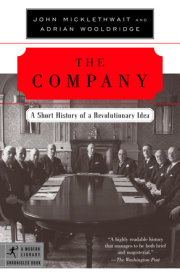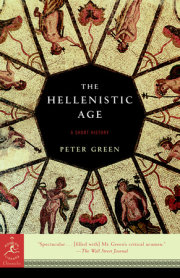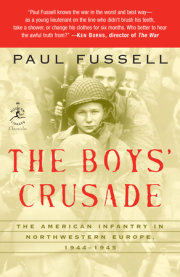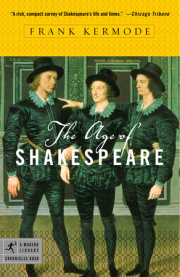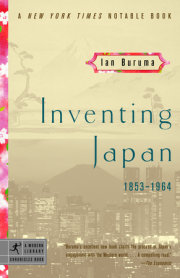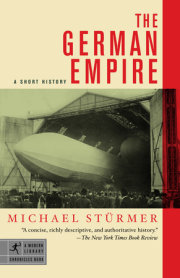1
Merchants and Monopolists
3000 b.c. — a.d. 1500Before the modern company came of age in the mid-nineteenth century, it had an incredibly protracted and often highly irresponsible youth. The merchants and marauders, imperialists and speculators, who dominated business life for so many centuries might not have formed fully fledged companies as we know them, but they nevertheless created powerful organizations that changed commercial life.
As long ago as 3000 b.c., Mesopotamia boasted business arrangements that went beyond simple barter. Sumerian families who traded along the Euphrates and Tigris rivers developed contracts that tried to rationalize property ownership. The temple functioned as both bank and state overseer. The Assyrians (2000–1800 b.c.), a group one normally associates with biblical savagery, took this farther. One document shows an Assyrian ruler formally sharing power with the elders, the town, and the merchants (or karum, named after the word for quay, where they sat). There was even a partnership agreement. Under the terms of one such contract, some fourteen investors put twenty-six pieces of gold into a fund run by a merchant called Amur Ishtar, who himself added four. The fund was to last four years, and the merchant was to collect a third of the profits—terms not dissimilar to a modern venture-capital fund.
The Phoenicians and later the Athenians took this sort of capitalism to sea with them, spreading similar organizations around the Mediterranean. The expense and time involved in maritime commerce made some type of formal arrangement even more necessary than its land-based equivalent. So did the ever-present danger, for investors and creditors alike, that a sea captain would simply disappear. (Homer, the first of a long line of storytellers to distrust traders of all sorts, denounces merchants from Tyre for being duplicitous.)
The Athenian model stood out because it relied on the rule of law rather than the whim of kings, and because it was unusually open to outsiders. A banker and ship owner named Pasion, who died in 370 b.c. as one of the city’s richest men, originally arrived as a barbarian slave. Yet, Athenian businesses remained small beer, typically mustering no more than a handful of people; even shield factories, the largest-known businesses, seldom employed more than one hundred slaves.
The societates of Rome, particularly those organized by tax-farming publicani, were slightly more ambitious affairs. To begin with, collecting taxes was entrusted to individual Roman knights; but as the Empire grew, the levies became more than any one noble could guarantee, and by the Second Punic War (218–202 b.c.), they began to form companies—societates—in which each partner had a share. These firms also found a role as the commercial arm of conquest, grinding out shields and swords for the legions. Lower down the social scale, craftsmen and merchants gathered together to form guilds (collegia or corpora) that elected their own managers and were supposed to be licensed.
William Blackstone, the great eighteenth-century jurist, claimed that the honor of inventing companies “belongs entirely to the Romans.” They certainly created some of the fundamental concepts of corporate law, particularly the idea that an association of people could have a collective identity that was separate from its human components. They linked companies to the familia, the basic unit of society. The partners—or socii—left most of the managerial decisions to a magister, who in turn ran the business, administered the field agents, and kept tabulae accepti et expensi. The firms also had some form of limited liability. On the other hand, the societates were still relatively flimsy things, “mere groups of individuals,” as one historian puts it. Most tax-farming contracts were for short terms. And most wealth was still concentrated in agriculture and private estates.
When Rome crumbled, the focus of commercial life moved eastward—to India, and particularly to China and the Islamic world. The prophet Mohammed (569–632) was a trader. If the religion that he founded banned usury, it nevertheless encouraged responsible moneymaking: while Christian businessmen often found their work at odds with their creed, Muslim merchants like Sinbad could be heroes. To this moral advantage, they could add a couple of geographic ones. First, they sat between West and East. Thousands of Muslim merchants had reached China before Marco Polo appeared. And, second, many Arabs lived in barren places with only rudimentary agriculture. In Mohammed’s Mecca, there was precious little for a young man to do other than become a trader.
The Chinese, meanwhile, opened up a huge technological lead over the West. Within a decade of William the Conqueror dispatching Harold at the Battle of Hastings (1066), Chinese factories were producing 125,000 tons of iron a year—a figure Europe would not match for seven hundred years. The Chinese pioneered paper money. During his travels in China in 1275 to 1292, Marco Polo marveled at trading junks large enough to provide sixty merchants with their own cabins. Even by the time that Vasco da Gama made it round the Cape of Good Hope to East Africa in 1497, his much- better-dressed hosts, accustomed to China’s huge ships, wondered how he could have put to sea in such puny craft.
The debate about why the Chinese and Arabs lost their economic lead to the West is a huge one. Suffice to say here that their relative failure to develop companies was part of their broader geographic and cultural shortcomings. Islamic law allowed for a form of flexible trading partnership, the muqarada, which let investors and traders pool their capital. But, for the most part, the law relied on oral testimony rather than written contracts. And the inheritance law rooted in the Koran rigidly divided up a dead partner’s estate between countless family members (as opposed to the European system, which usually allowed partners to nominate a single heir). This tended to prevent Muslim firms from growing to a size where they needed to raise capital from outsiders.
In China’s case, the idea of permanent private-sector businesses was undermined both by culture and by state interference. Chinese merchants evolved elaborate partnerships: by the fourteenth century, there were a number of different categories of investor and merchant. But these partnerships seldom lasted much longer than a few voyages.
Meanwhile, many of the big “companies” that did emerge in China relied on the state. Hereditary bureaucrats ran state monopolies in many industries, including porcelain. These businesses often enjoyed huge economies of scale—until the eighteenth century, Chinese factories were far more impressive than anything the West could offer. Yet, the state monopolies suffered from the opposite problem from the businesses of merchants: they were not temporary enough. The very vastness of China counted against them. As we shall see, European state monopolies were also inefficient and corrupt, but they were at least kept on their toes and prevented from becoming so bureaucratic by having to compete with state monopolies from other countries.
In the end, China’s determination to look inward proved fatal. Arguably the zenith of Chinese economic imperialism came in the early fifteenth century, when the Ming emperor Yung Lo, who ascended the throne in 1403, built a fleet of huge treasure ships, which he dispatched around Asia. But after Yung’s death in 1424, his son stopped the treasure ships and gave their most famous seafarer, Zheng He, a landlubber’s job. Crucially, he also ordered all mercantilist exploration to stop. Later emperors rebuilt trade relations with other Asian countries, but their ambitions were limited. In 1793, the Chinese emperor sent a message to Britain’s George III: “As your ambassador can see, we possess all things. . . . There is therefore no need to import the manufactures of outside barbarians in exchange for our own produce.” This was an unfortunate attitude, for by then China’s merchants faced a formidable new form of business organization.
Copyright © 2003 by John Micklethwait and Adrian Wooldridge. All rights reserved. No part of this excerpt may be reproduced or reprinted without permission in writing from the publisher.


